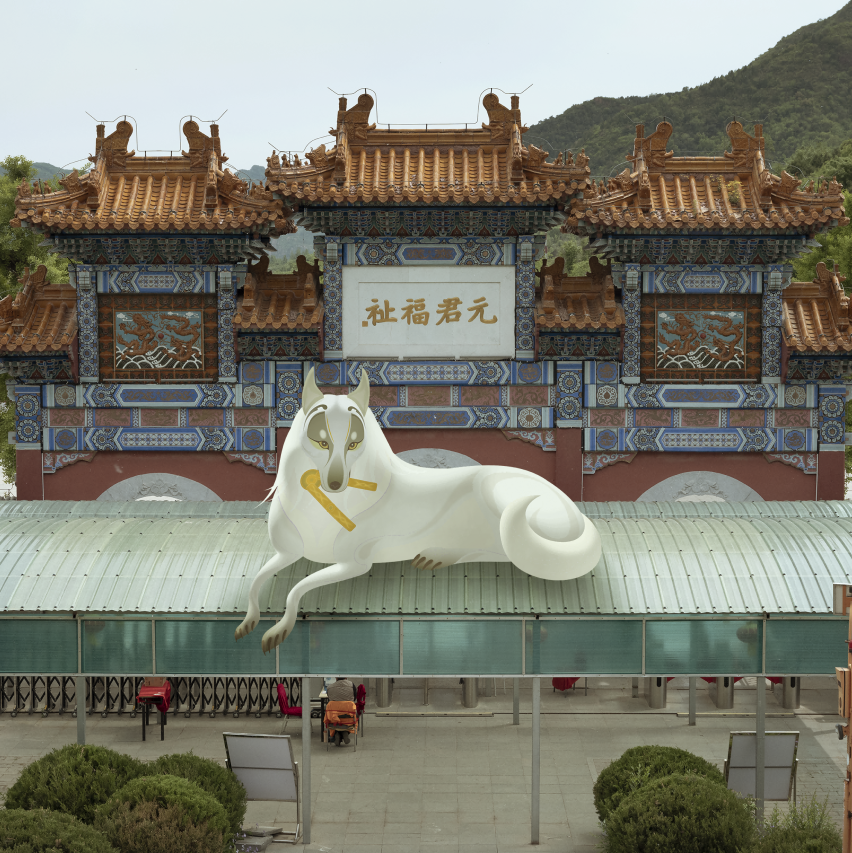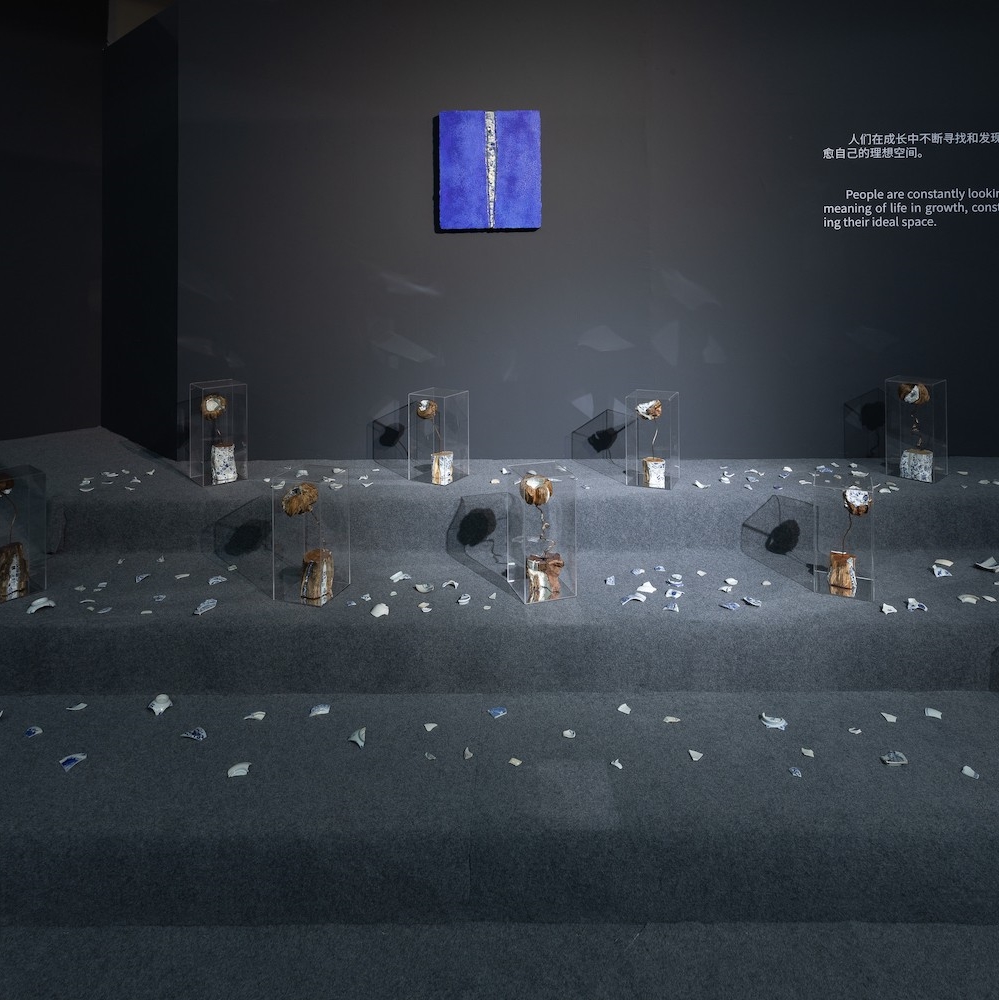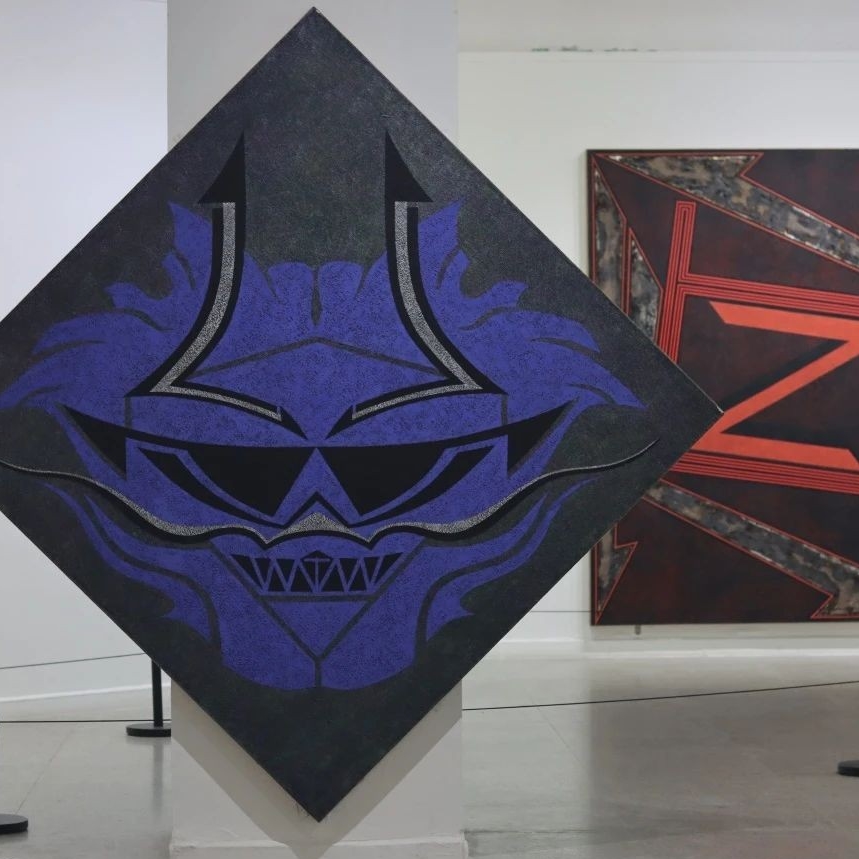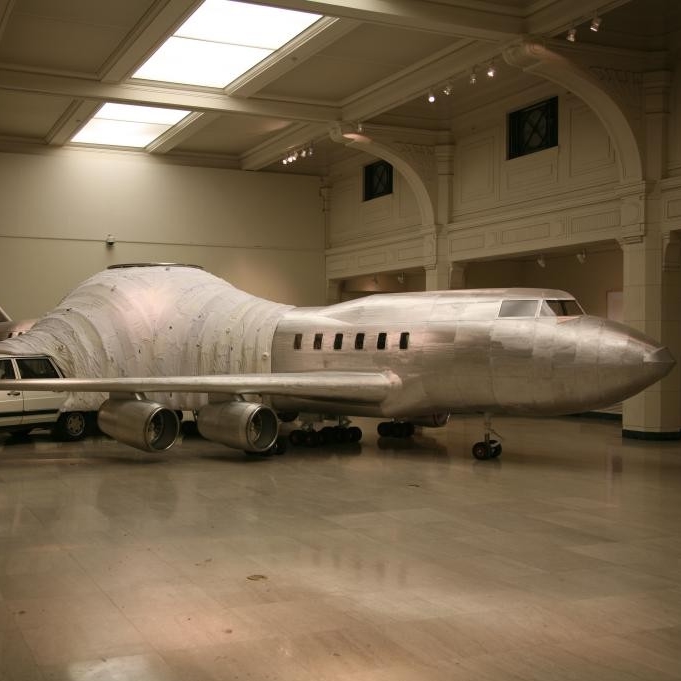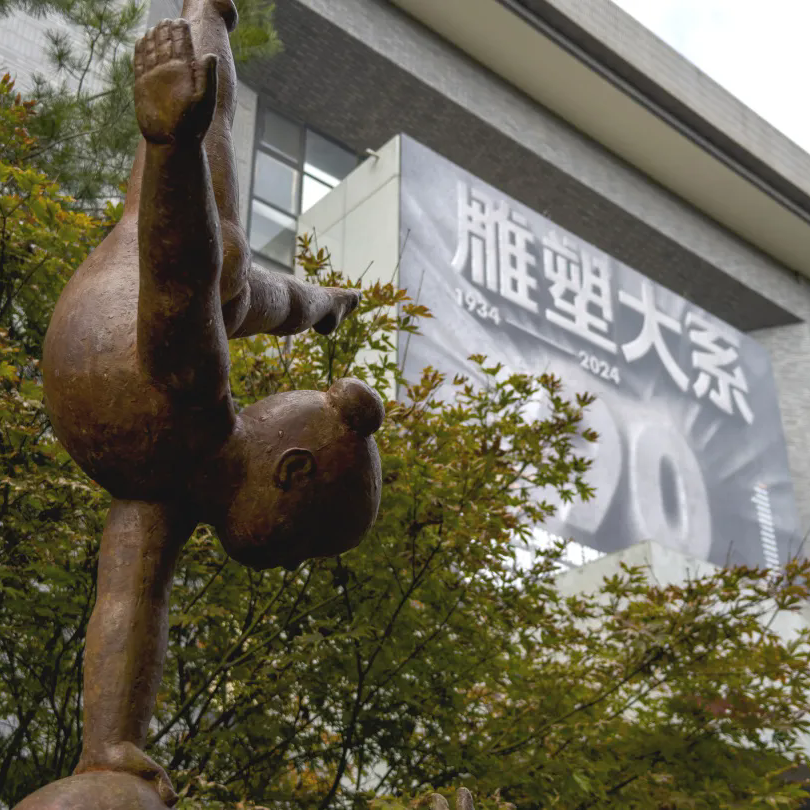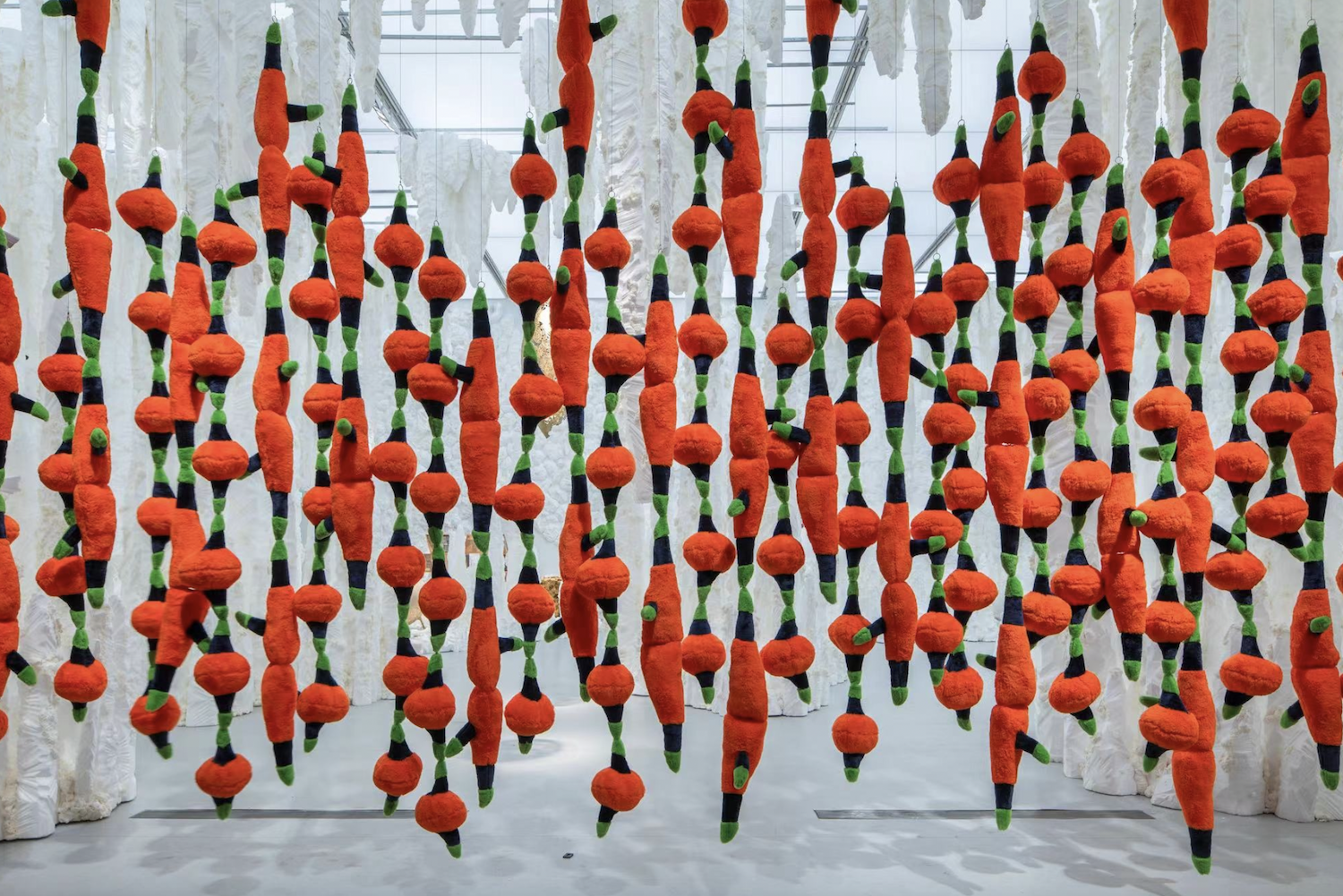
Installation Views of Impermanence - 40 Years of Estúdio Campana, ©Power Station of Art.
Established in 1984 by Brazilian design duo Humberto Campana (b.1953) and Fernando Campana (1961-2022), “Impermanence” marks the São Paulo-based studio’s first major exhibition in Asia. Co-curated by Marco Sammicheli, Curator for Design, Fashion, Crafts and Director Museo del Design Italiano at the Triennale Milano, and Gong Yan, Director of PSA; Scenography design by the studio co-founder Humberto Campana; Graphic design by Maru Widen, the exhibition focuses on the cultural production of the studio through the proposal of objects, projects, drawings, and works that best summarize the history, trajectories, and insights of the practice.
The exhibition brings over fifty pioneering pieces that represent and trace the history of thoughts and actions that have prefigured well in advance artistic events, design solutions, and urgent reflections on the coexistence of human beings and nature. With the tall order of introducing four decades of studio production to the Chinese audience, a Cabinet of Curiosities will welcome visitors into the Campana universe of references from childhood to the beginning of the brothers’ careers, including never-before displayed personal objects, original drawings, and prototypes.
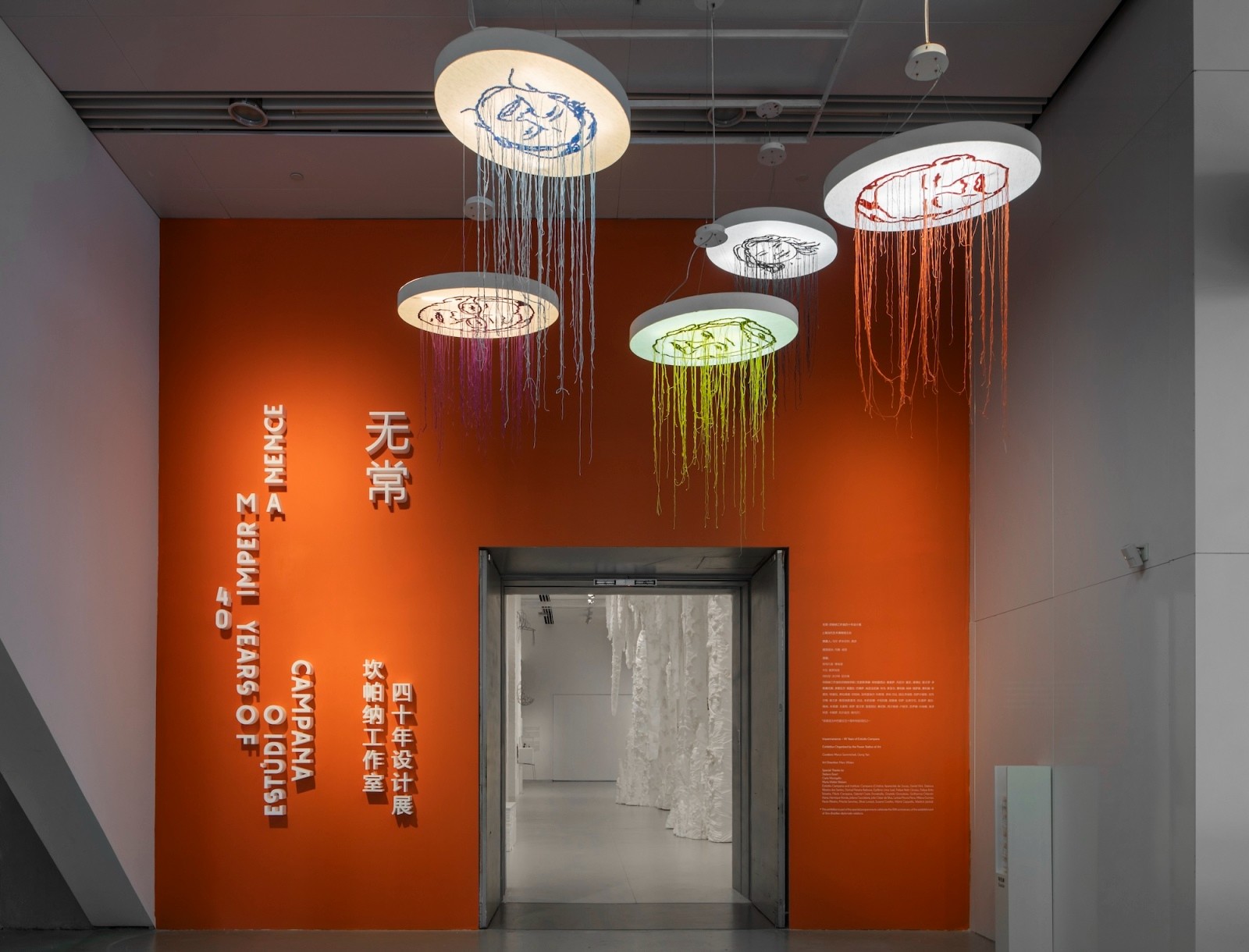

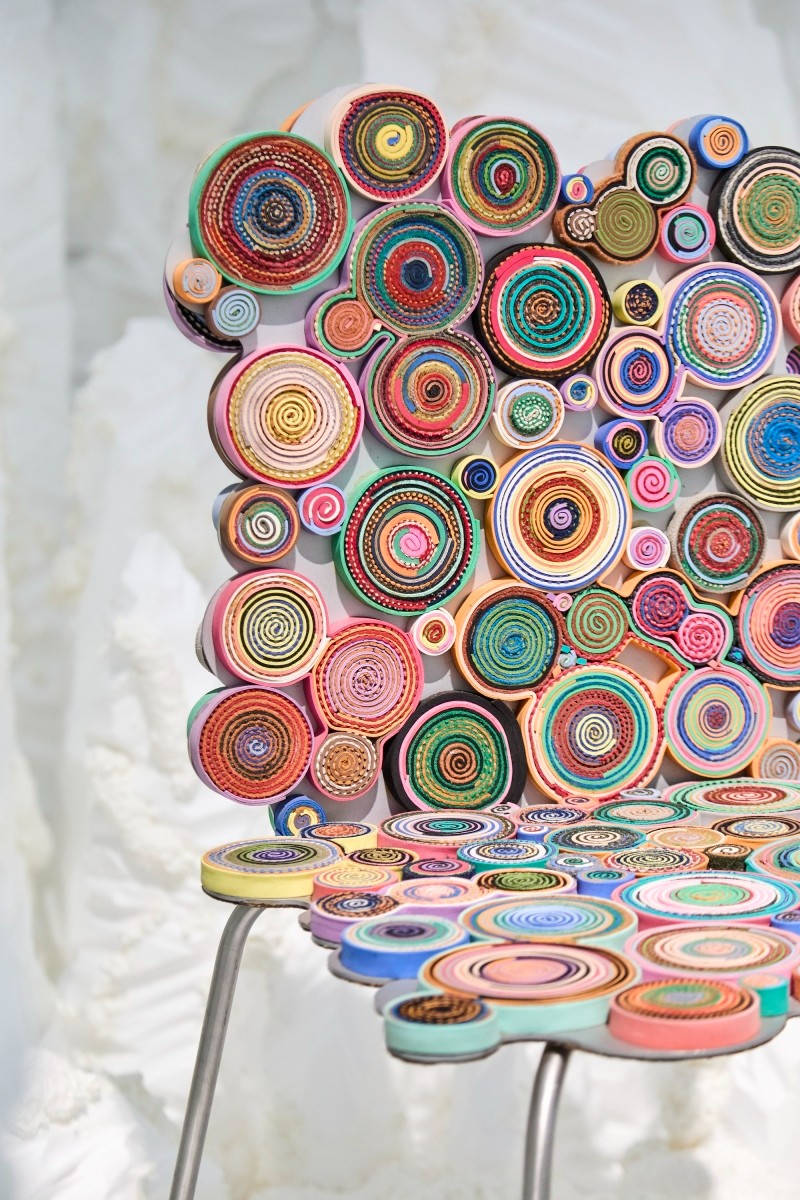
Installation Views of Impermanence - 40 Years of Estúdio Campana, ©Power Station of Art.
For the main exhibition hall, the curatorship has created three thematic stances: a manual act, which involves artisanal knowledge, manufacturing, and material investigation; an expressive act which develops an intimate thought and makes it collective by transforming genres, types, and techniques dignifying hybrid and organic matter; and a political act which builds communities, transmits knowledge, and regenerates a territory.
To nest the curators’ vision, Humberto Campana has designed an alluring structure of artificial stalactites and stalagmites, a reference to Plato’s “Allegory of the Cave”, where visitors can roam freely and discover the works, as they materialize from behind the organic-shaped columns, like a game of hide-and-seek.
“I wanted to combine the curators’ work with a child-like experience, which for me is the most accurate way of explaining how my brother and I trailblazer through life: by taking steps into dark, unknown territories, and shedding light into our explorations and findings. Plato’s classic allegory is something we can all relate to, at any age or background. I like to think we are all born curious, and this scenography is an invitation to embrace estrangement, step away from your comfort zone, and be rewarded by the courage to let imagination run free in an adventurous search for joy.” says Humberto Campana “The work of the Campana brothers has transformed contemporary design. They were the first to intuit the richness of hybridizing creativity by giving dignity to scraps, waste and less noble materials so that the objects could portrait and attest desires: the ethics of recycling, the dignity of artisan work, the forgotten aesthetics of rural and indigenous Brazil, the madness of colors and shapes in the domestic landscape, the hybridization between production systems and ecological awareness. In a forty-year career, Estúdio Campana has demonstrated the possibility of connecting decoration and political message, function and fiction, culture and nature.”
-Marco Sammicheli
“The creations of the Campana brothers originate from their optimistic embrace and imagination of life. Their unique employment of materials and craftsmanship gives their design a quality of physical tactility that transcends mere functionality, embodying both an extension and a celebration of life itself. This exhibition also hopes to initiate a series of discussions on design, materials, traditions, and social concern.”
-Gong Yan
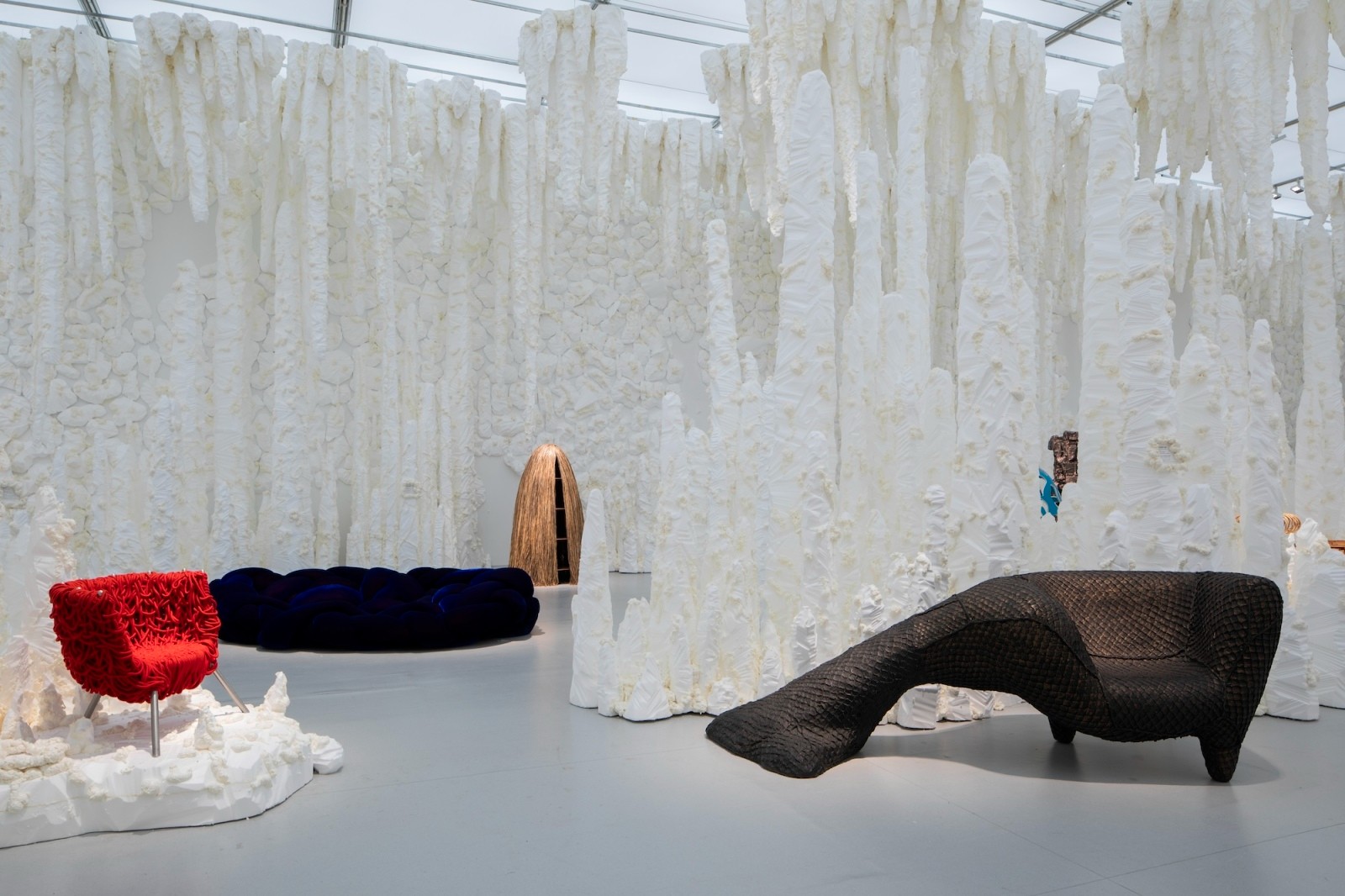
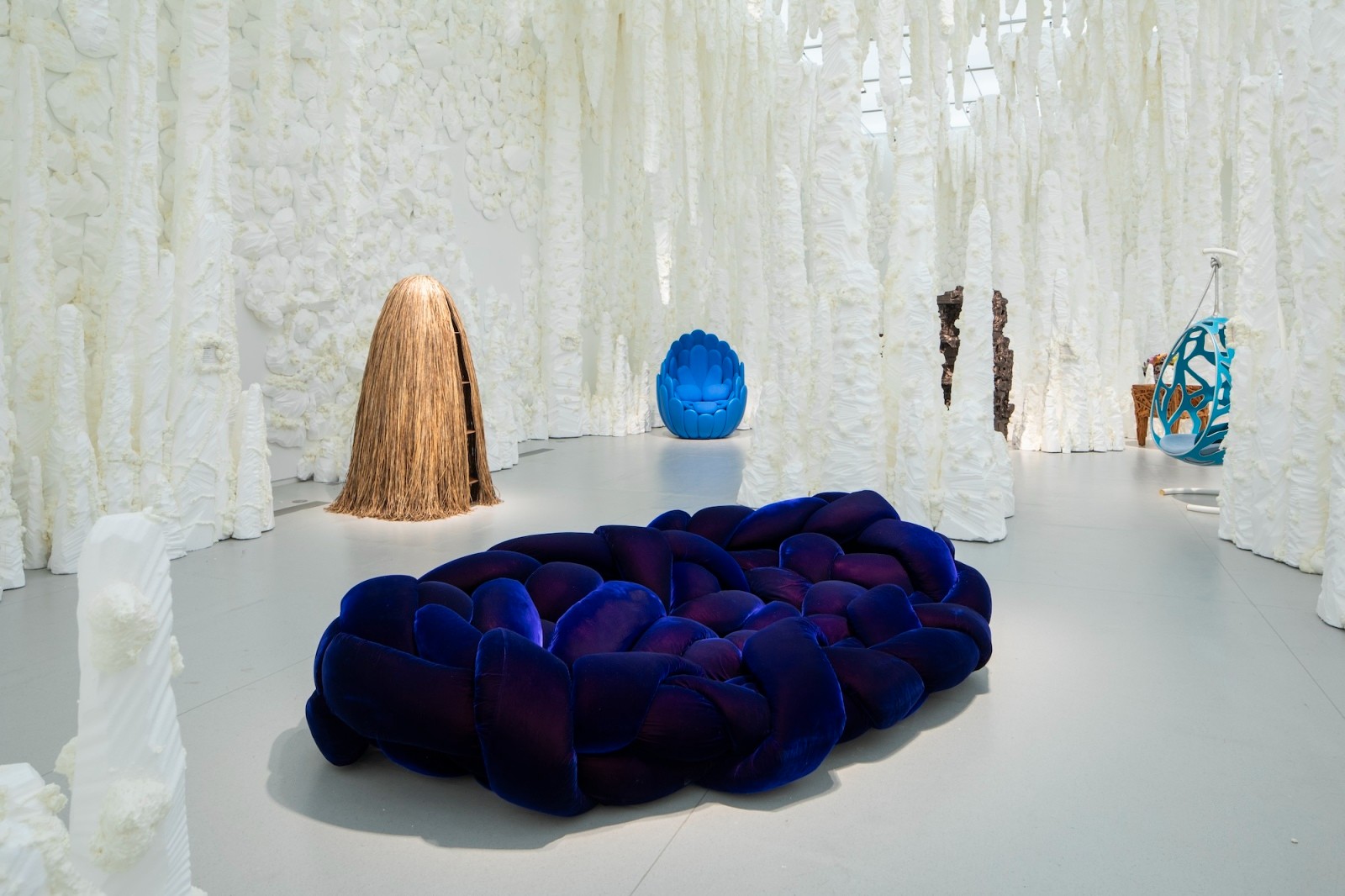

Installation Views of Impermanence - 40 Years of Estúdio Campana, ©Power Station of Art.
Two screening rooms completes the experience with a collection of artists’ videos, including “We The Others”, a brand-new production by Francesca Molteni and Maria Cristina Didero presented this past April at Triennale Milano during Design Week. Archival footage will also be shown, including contemporary ballet productions and TV specials, such us the story of “Vermelha”, the ground-breaking chair created in 1993 that became Humberto’s and Fernando’s most recognized and best-selling piece.

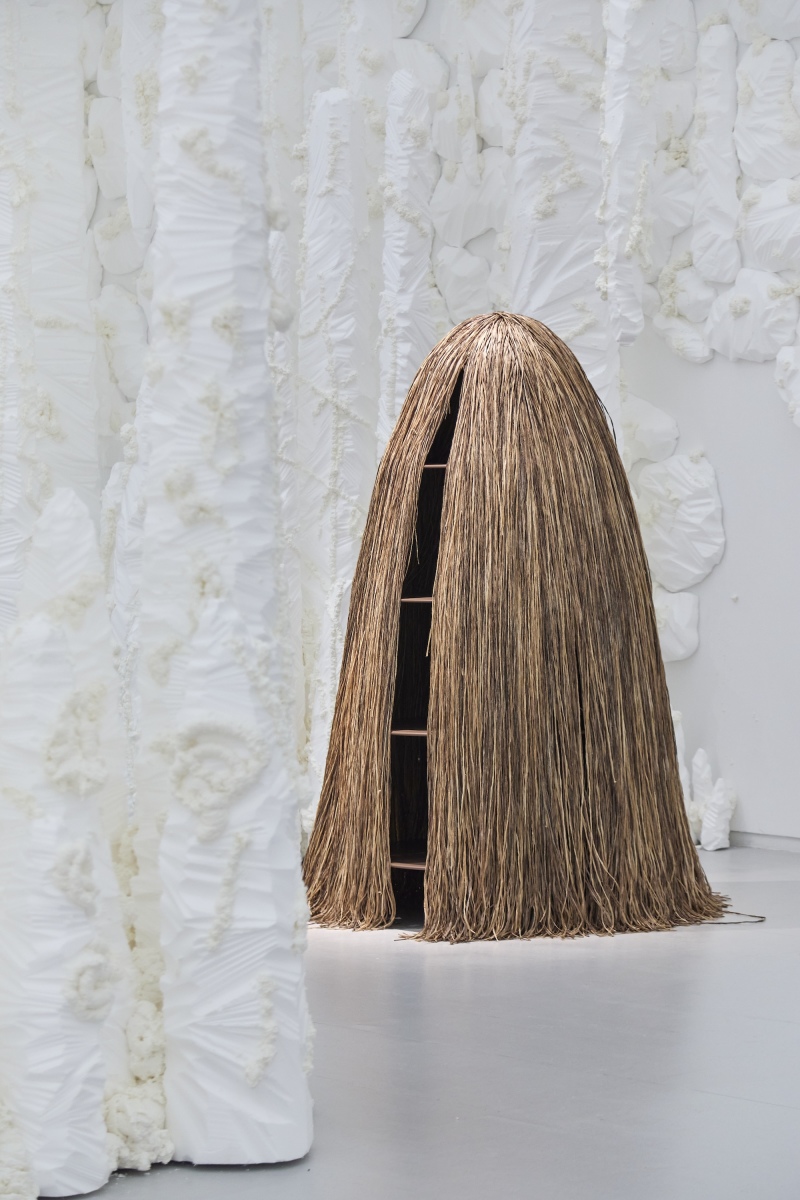
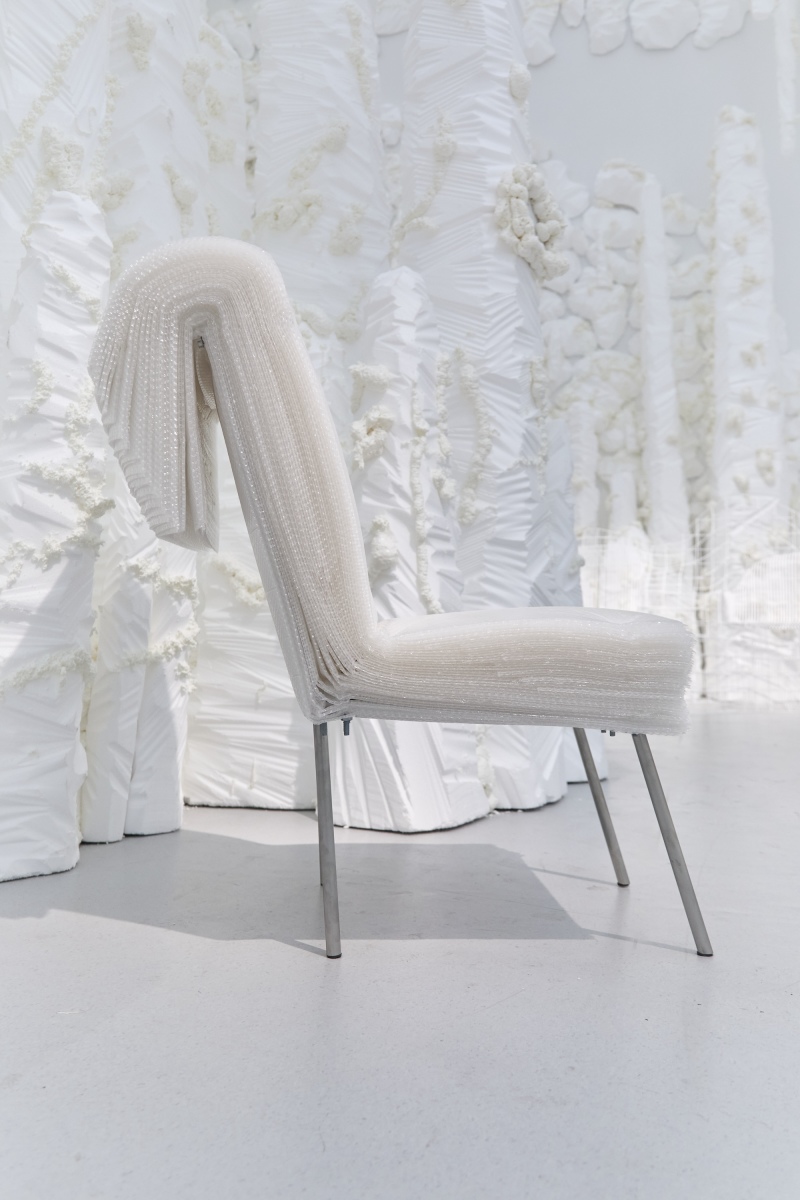
Installation Views of Impermanence - 40 Years of Estúdio Campana, ©Power Station of Art.
In parallel, Estúdio Campana was commissioned to produce two new works: an installation for the museum’s atrium, entitled “Astro”, a 12-meter-high hanging tulle sculpture inspired by the images generated by the Hubble Space Telescope; and another installation to inaugurate PSA’s unique “Sky Garden” in collaboration with Chinese garden designer Yuan Zhen. “Pyro” is an oversized cluster of bamboo and steel structures resembling star outbursts that will dot the area that oversees the skyline of Shanghai, fully integrated with the graceful landscape design. The 2000m2 rooftop will be launched along with the opening of “Impermanence”.

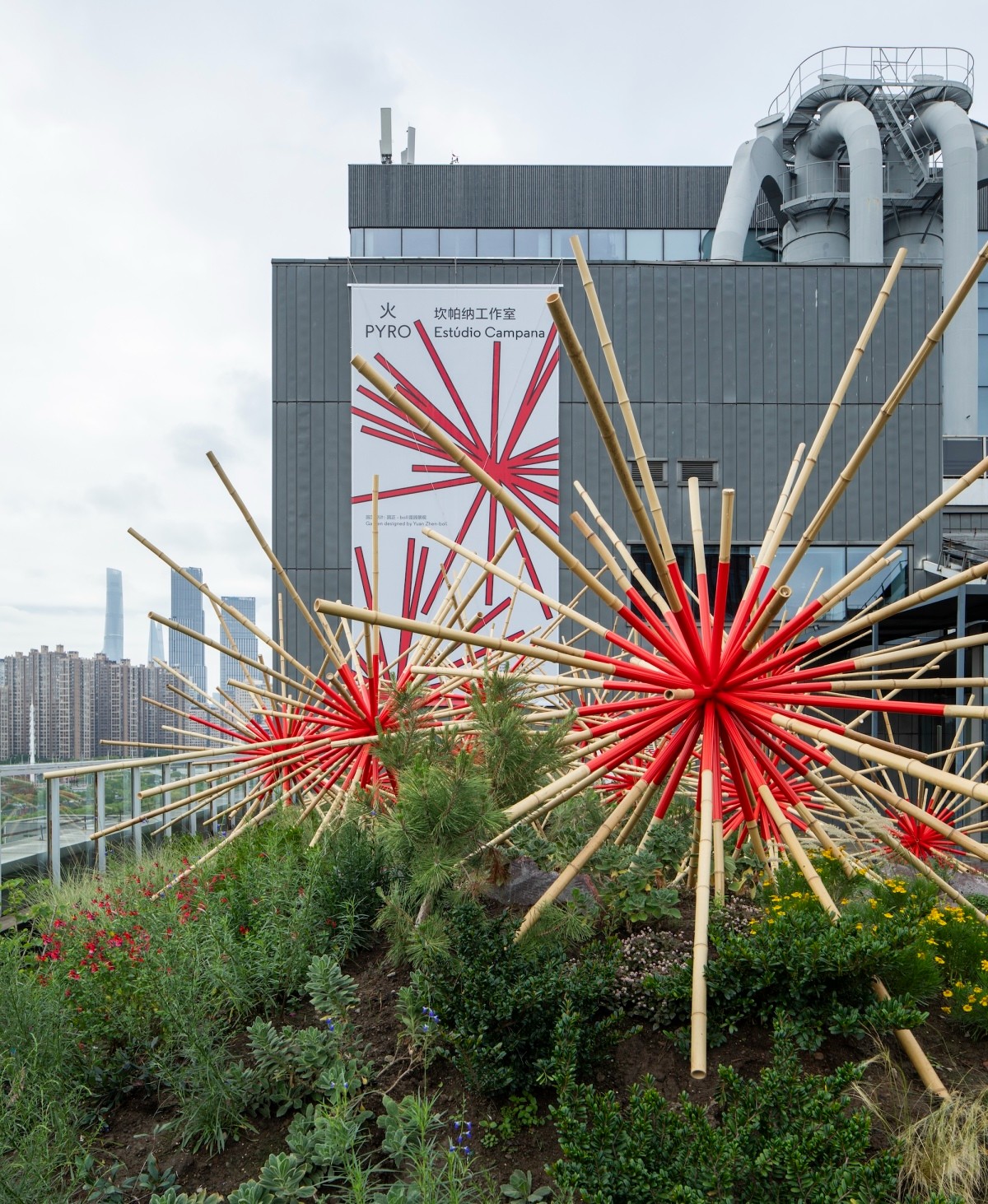
Installation Views of Impermanence - 40 Years of Estúdio Campana, ©Power Station of Art.
About Estúdio Campana
Co-founded in 1984 by brothers Fernando (1961-2022) and Humberto (1953) Campana, the Campana studio has achieved international recognition for its furniture design and intriguing pieces. In 2024, the studio celebrates its 40th anniversary acknowledged as a pioneer of disruptive design, which led them to create a groundbreaking language in their field.
Deeply rooted in Brazilian culture and traditions, their work carries universal values at its core, such as freedom and human dignity, creating their identity through life experiences. By incorporating the idea of transformation and reinvention, their creative process raises everyday materials to nobility. Brazilian characteristics - such as the abundance of colors, mixtures, and creative chaos - bring the triumph of simple solutions, poetically.
Based in São Paulo, Campana is constantly investigating new possibilities within Design: from furniture making to architecture, landscaping, fashion, scenography, and more. Bridging disciplines and encouraging the exchange of expertise among communities and artists are vital sources of inspiration, fresh repertoire, and free-thinking. Working with multiple brands and industries allows them to combine the best of craftsmanship, sustainable production practices and state-ofthe-art technologies.
In 2002, Campana started crafting its line of limited editions and unique pieces, handmade at the studio in Sao Paulo. These special editions are represented by international galleries, including Friedman Benda in New York, Carpenters Workshop Gallery in London and San Francisco, Galleria Giustini/Stagetti in Rome, and Firma Casa in Sao Paulo, as well as Luciana Brito Galeria, which started representing Campana in Brazil in 2022.
About the Curators
Marco Sammicheli (Fano, 1979) is curator of Design, Fashion, Crafts sector at Triennale Milano and Superintendent of Museo del Design Italiano since 2020. He’s also been working as International Relations Chief Officer at Triennale Milano, where he’s supervising the International Exhibition program in collaboration with the Bureau International des Expositions (BIE) and the Italian Minister of Foreign Affairs. He curated exhibitions in Europe and Latin America and essays on catalogs for cultural institutions, museums and private galleries, with a particular focus on designers such as Zaha Hadid, Bruno Munari, Carlo Mollino, Ettore Sottsass, Alberto Meda, Mario Bellini, Inga Sempé. He’s contract professor at Università Cattolica in Milan and columnist for Il Sole 24 Ore and Wallpaper*.
Gong Yan graduated from Ecole Nationale Superieur des Beaux-Art, Paris, professor of Shanghai Institute of Visual Art, former Chief-Editor of Art World magazine. Since 2013, Gong Yan has been the director of Power Station of Art. Gong Yan had curated exhibitions such as: Ordinary Architecture—The Chinese Pavilion in the 11th International Architecture Venice Biennale; Shinohara Kazuo; Mobile Architecture: Yona Friedman; Snacks; PSA Collection Series Yu Youhan; PSA Collection Series Li Shan; Body Media; HON: Niki de Saint Phalle & Shen Yuan, Hussein Chalayan: Archipelago, etc.
About the Exhibition
Dates: 08/06/2024 — 08/09/2024
Venue: 3F PSA
Curators: Marco Sammicheli, Gong Yan
Scenography design: Humberto Campana
Graphic design: Maru Widen
Courtesy of Power Station of Art.


